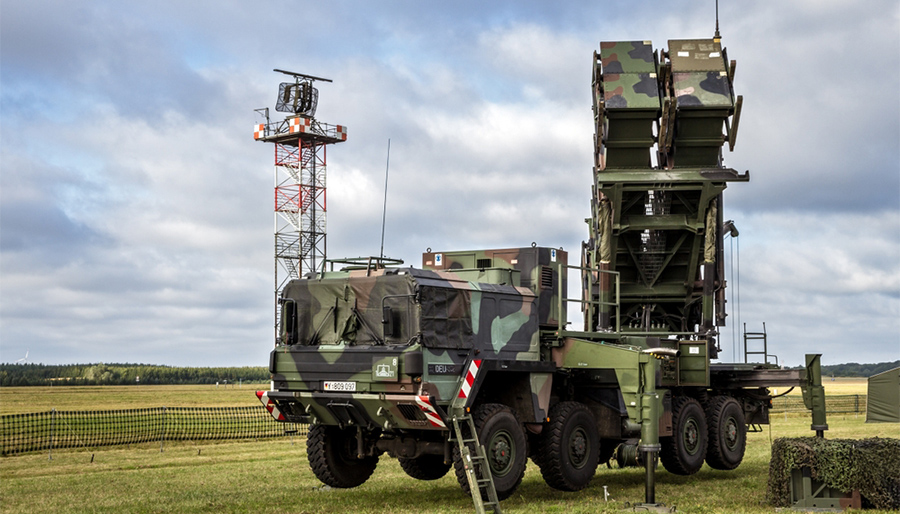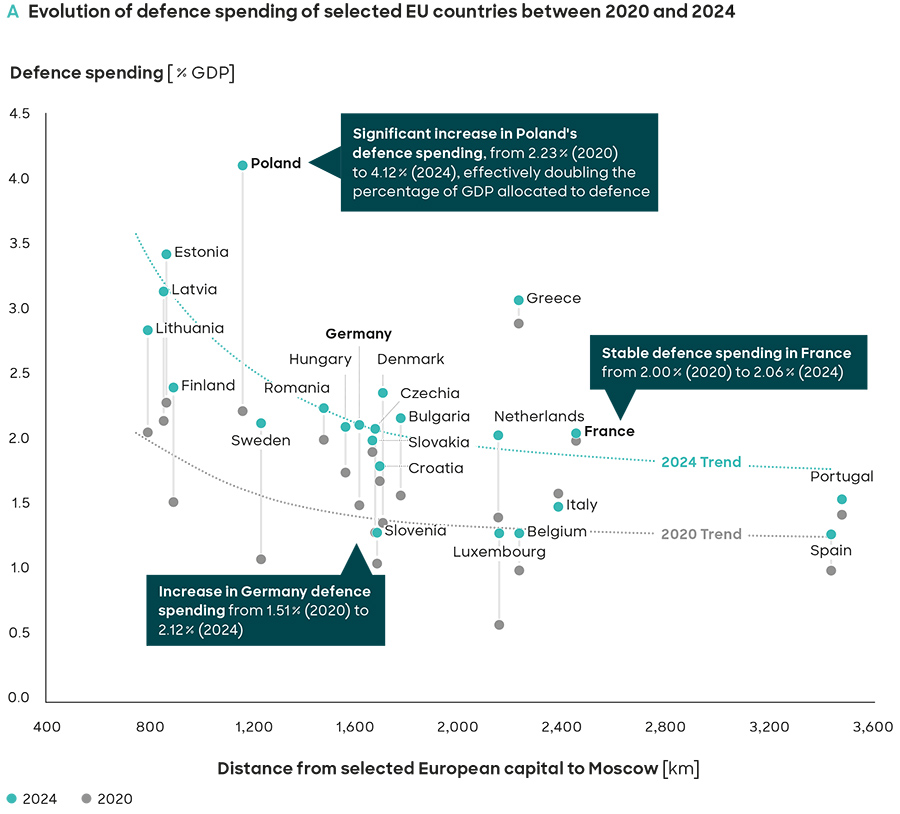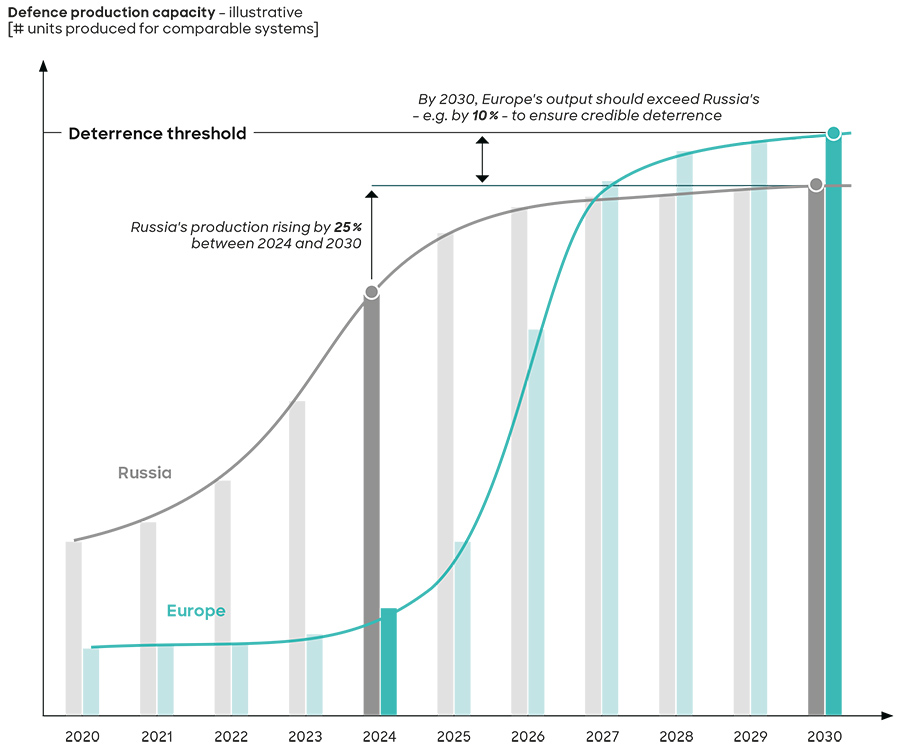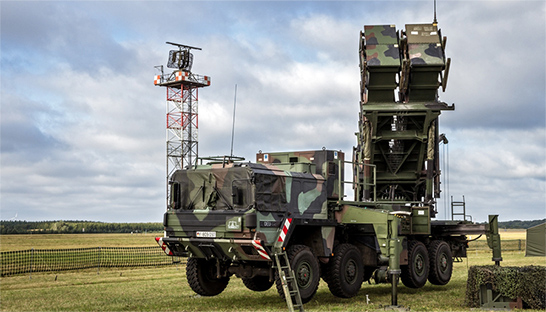
With regional threats growing, Europe has shifted to a defensive footing – including more military spending. Though spending has already been increased by many European Union member states, a more holistic approach to deterrence is needed, according to a new report from Roland Berger.
Russia’s invasion of Ukraine in 2022 marked a turning point for Europe, shattering assumptions about peace and stability on the continent. Though European governments have been facing a serious security challenge from Russia since the annexation of Crimea in 2014 (seen as the first major move in the current conflict), the 2022 invasion was when the EU really began putting more priority on defence spending.
Now, with President Donald Trump back in the White House, discussions around NATO and Europe’s defence have gained fresh momentum, offering an opportunity for allies to strengthen their commitments and reimagine the future of transatlantic security.
Spending is up across the EU
Over the years, European countries have made a habit of contributing less than the benchmark of 2% of GDP set by NATO, long relying on the US to pick up the slack. But that has now changed: Nearly every country in the EU has significantly increased their defence spending in response to American and NATO warnings.

Source: Roland Berger
Germany reported spending 2.12% of their GDP on defence last year, up from just 1.5% in 2020. Some boosted their spending much more. Take for example Poland, which spent a whopping 4.12%, nearly double what they spent in 2020. Estonia, Lithuania, the Netherlands, and Sweden are among other countries that also seriously upped their defence spending since 2020.
A lot of this investment will go to the obvious components of defence: Tanks, guns, artillery, missiles – the sort of ‘meat and potatoes’ of militaries. But governments are also investing in research and development, fostering a robust industrial sector and an innovation ecosystem. Besides that, there also needs to be enough manpower, like troops and various types of personnel.
Europe’s ‘deterrence threshold’
The Roland Berger report points to Europe’s ‘deterrence threshold’, or in other words, the production output target that reaches the industrial capacity needed to sustain and replenish the defence equipment needed. That includes not just the obvious equipment, but also enough funding to fight against things like cyber-attacks, terrorism, or unconventional attacks on infrastructure.

Source: Roland Berger
Europe has a long way to go to keep up with Russia’s level of military spending. Russia is projected to increase spending by around 25% between 2024 and 2030. Europe’s spending should ideally remain at about 10% above the established ‘deterrence threshold’.
“We’ve entered a ‘new world’ in which traditional military platforms converge with high-volume, affordable and software-defined technology. Civilian innovators can help defence firms remain agile and cost effective,” notes Eric Kirstetter, senior partner at Roland Berger.
Gearing up for this new reality will require more dynamism from European governments and industry. That could include innovative solutions from startups or focused ventures from legacy players. Some small firms are focusing on AI-powered military tools, for example.
“Europe’s ability to deter and defend will depend not only on budgets or technology – but on how fast we align public strategy with private execution. Effective coordination must now become Europe’s core competitive advantage,” says Stefan Schaible senior partner and global managing partner at Roland Berger.
The road ahead
Ramping-up defence spending could happen in different ways. For example, EU institutions could lead the way, with policymakers and military agencies taking a lead role. In another scenario, defence industry players could lead the way, with the private sector stepping up to meet this ‘new world’ reality.
Despite the calls for Europe to seriously increase military spending, leaders should also prioritise diplomacy if the continent hopes to avert an endless arms race in which there would be no winners. With geopolitical tension growing around the world, with many regions already steeped in conflict, European countries could also look to take a leading role in advocating for more open dialogue and conflict resolution.
